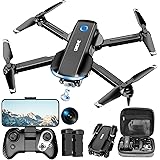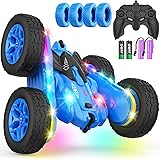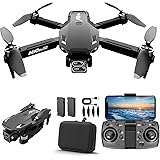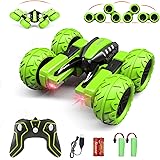The world of RC multi-rotors is a vast and exciting landscape, where enthusiasts frequently design and build their own aerial vehicles. Among the various configurations, the Y3 tricopter stands out as a unique and often rewarding project for those looking to explore something beyond the more common quadcopter designs. The video above offers a glimpse into a successful maiden flight of a custom-built **Y3 tricopter**, showcasing its initial capabilities and the key components that bring such a machine to life.
For many hobbyists, the journey of building a drone begins with selecting the right frame and a comprehensive set of electronics. This particular **Y3 tricopter** build provides an excellent reference point, detailing a specific configuration that achieved a stable first flight. Understanding the purpose of each component and how they interact is crucial for anyone venturing into custom drone construction.
Understanding the Y3 Tricopter Configuration
A tricopter, distinguished by its three rotors, offers a different flight experience compared to a quadcopter. The Y3 configuration, where two motors are at the front and one at the rear, is particularly popular due to its inherent simplicity and the mechanical yaw control mechanism typically employed at the tail. This design often leads to a more agile flight characteristic, though it introduces the complexity of a servo-driven tail motor.
The chosen frame for this build is a **Turnigy Y3**, a name recognized in the RC hobby community for providing accessible and functional components. A frame like this is foundational, supporting all the essential electronics and providing the structure for flight.
Key Components Powering the Y3 Tricopter
For any multi-rotor to take flight, a careful selection of motors, electronic speed controllers (ESCs), and propellers is paramount. These three elements form the propulsion system, which directly dictates the drone’s lifting capacity, speed, and efficiency.
- Motors: 750kv Rctimer
The Rctimer 750kv motors chosen for this **Y3 tricopter** are a significant part of its performance. The “kv” rating (RPM per volt) indicates how fast a motor will spin under a given voltage. A 750kv motor is typically considered a good balance for efficiency and thrust, especially when paired with larger propellers, making it suitable for stable flight and longer durations rather than extreme speed. - Propellers: Fiber 13×5
Propellers are the ‘wings’ of a drone, generating thrust. The 13×5 fiber propellers chosen here imply a large diameter (13 inches) and a relatively low pitch (5 inches). Larger props generally offer more lift and efficiency at lower RPMs, contributing to longer flight times, which aligns well with the 750kv motors. Fiber construction suggests a balance of rigidity and durability. - ESCs: 30amp
Electronic Speed Controllers (ESCs) are responsible for regulating the power delivered to the brushless motors. Each motor requires its own ESC. The 30-amp rating indicates the maximum continuous current that can be supplied, which must be sufficient to handle the peak current draw of the motors under load. For 750kv motors with 13×5 props on a 3S battery, 30A ESCs are often a suitable and safe choice.
The Brain: KK2.1 Evolution Flight Controller
At the heart of any multi-rotor is its flight controller, which interprets pilot commands and stabilizes the aircraft. The **KK2.1 Evolution** controller, mentioned as being used with “default” settings, is a popular choice for beginner and intermediate builders. It is known for its user-friendly interface with an onboard LCD screen, allowing for direct configuration without needing a computer, making it ideal for those learning the ropes.
Utilizing default settings for a first flight is a common practice, as it provides a known baseline configuration to test the hardware’s functionality before embarking on more advanced tuning. This approach minimizes variables and helps in diagnosing potential issues related to the build itself.
Control and Communication Systems
Seamless communication between the pilot and the drone is critical for safe and effective flight. This is achieved through the radio, receiver, and a dedicated servo for the tricopter’s unique yaw mechanism.
- Servo: Corona Digital 12g
The Corona Digital 12g servo plays a vital role in the Y3 design. Unlike quadcopters which achieve yaw by varying motor speeds, tricopters typically use a tilting mechanism on the rear motor. This servo precisely controls the angle of the tail motor, providing the necessary yaw authority. A digital servo is often preferred for its precision and responsiveness. - Receiver: X8R FrSky
The FrSky X8R receiver is a highly regarded component in the RC world, known for its reliable long-range capabilities and telemetry functions. Pairing this with a compatible FrSky radio ensures a robust link, vital for maintaining control during flight. - Radio: Taranis
The Taranis radio, also from FrSky, is a favorite among hobbyists due to its extensive customization options, open-source firmware (OpenTX), and excellent value. It offers precise control and the ability to configure complex flight modes and telemetry alarms.
Powering the Flight: Battery Specifications
The battery is the power source for the entire system. The choice of a **Turnigy 3s 2.200mah** battery is a common configuration for hobby-grade drones.
- 3s: This indicates a 3-cell Lithium Polymer (LiPo) battery, providing a nominal voltage of 11.1 volts (3.7V per cell). This voltage is standard for many motors and ESCs in this class.
- 2.200mah: The milliamp-hour rating denotes the battery’s capacity. 2200mAh is a moderate capacity, offering a balance between flight time and weight for many tricopter builds.
With this setup, a flight time of approximately 5 minutes was achieved, as noted in the video. Flight duration is a critical performance metric for any drone and is influenced by numerous factors, including battery capacity, motor efficiency, propeller choice, overall weight, and flying style. Optimizing these elements is a continuous process for hobbyists aiming to maximize their time in the air.
The successful maiden flight of this **Y3 tricopter** at Campo do União Futebol Clube in Angicos – Vespasiano – MG provides a clear illustration of a well-executed build and a practical example of a functional **Y3 tricopter** design.











